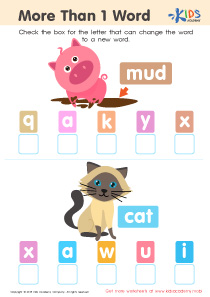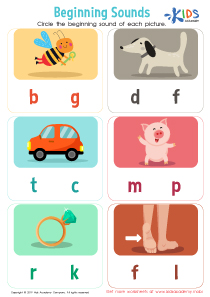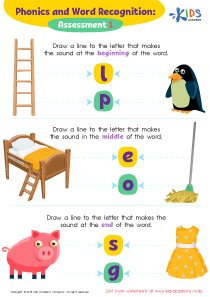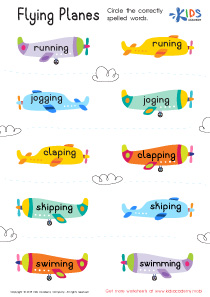Middle Sounds Worksheets for Ages 3-8
4 filtered results
-
From - To
Introduce your children to the magical world of phonics with our engaging Middle Sounds Worksheets, specially designed for ages 3-8! Our printable worksheets help kids to identify and practice vowel sounds within words, enhancing both reading fluency and spelling abilities. With colorful illustrations and fun activities, children will enjoy learning while improving their phonemic awareness. Perfect for use at home or in the classroom, these worksheets support foundational literacy skills that are essential for future success. Give your young learners the tools they need to thrive with Kids Academy's expertly crafted resources! Download and print today for phonics fun!
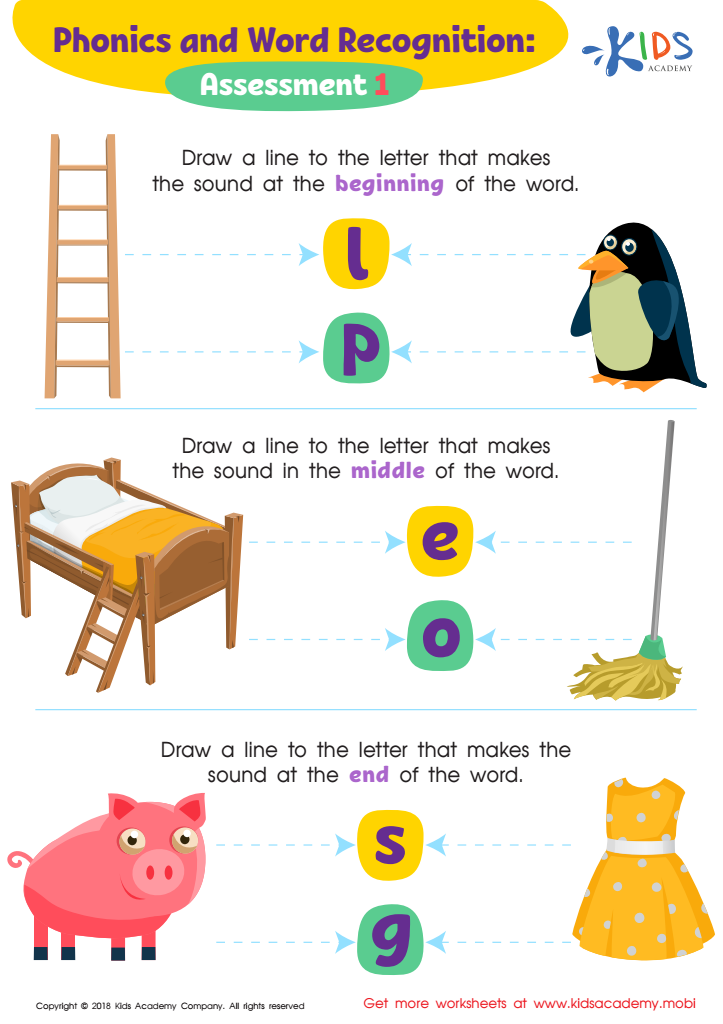

Phonics and Word Recognition: Assessment 1 ELA Worksheet
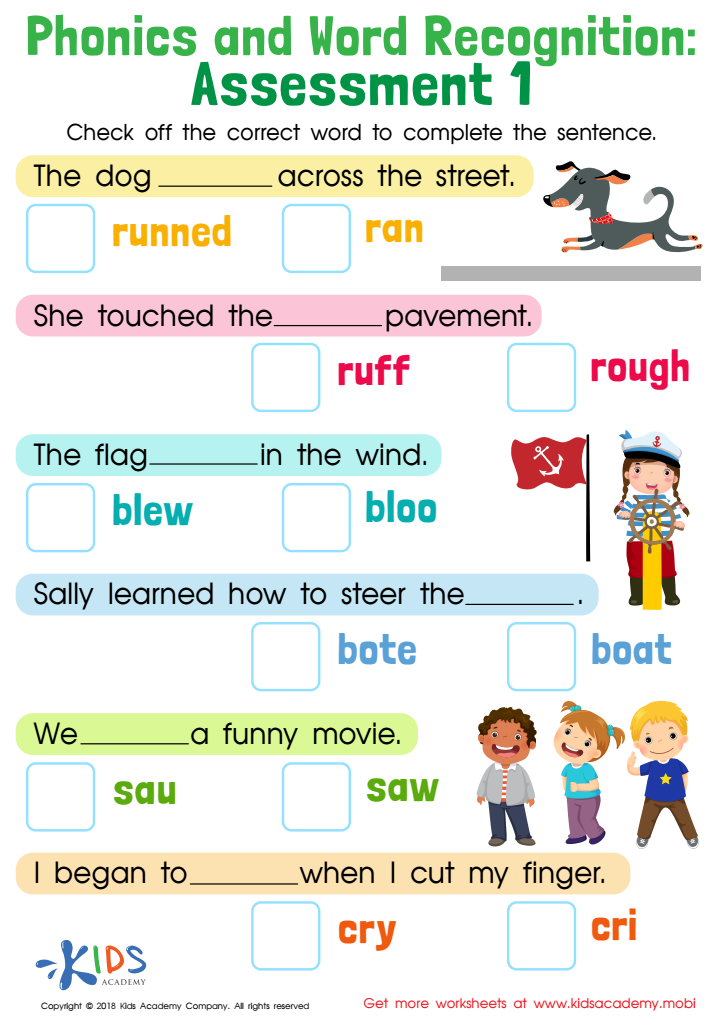

Phonics and Word Recognition: Assessment 1 Worksheet
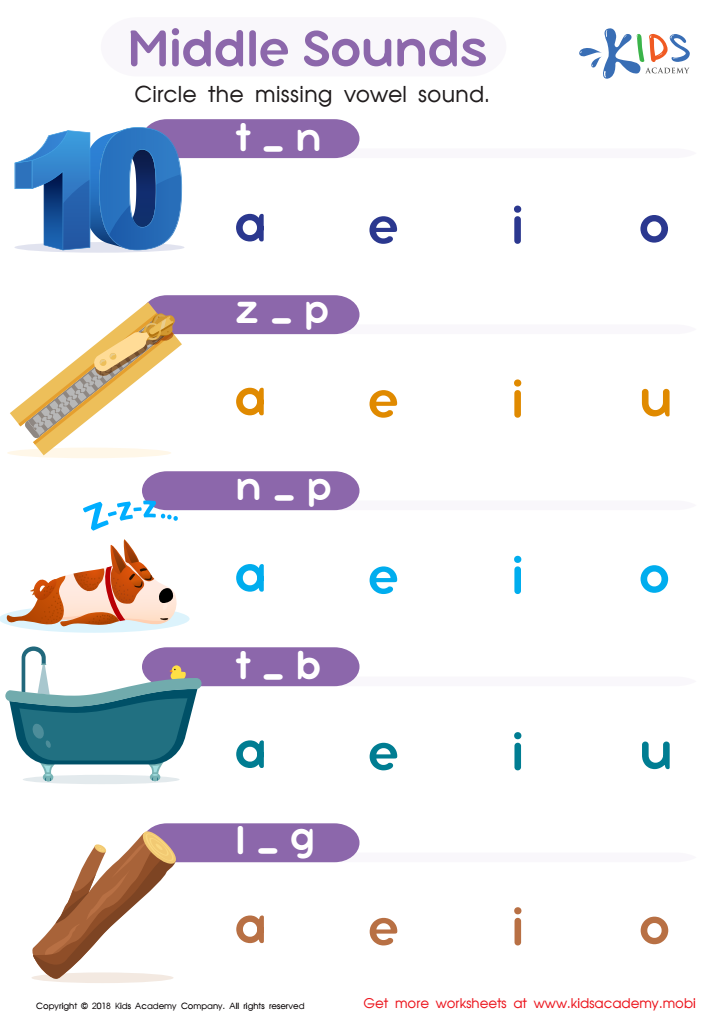

Middle Sounds Worksheet
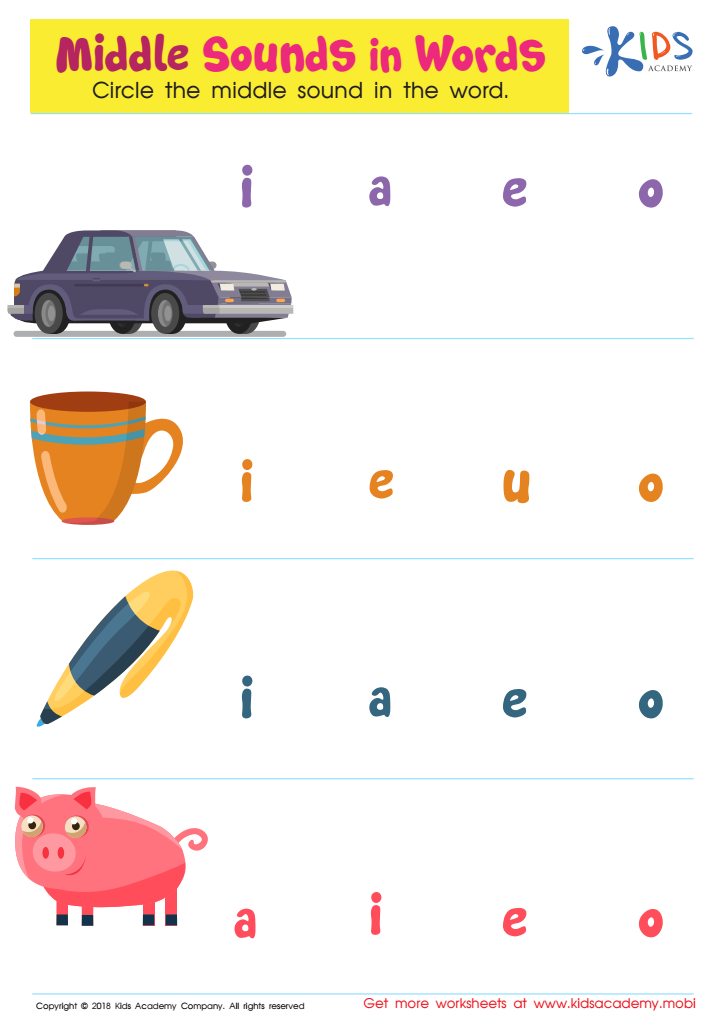

Middle Sounds in Words Worksheet
Understanding middle sounds, also known as medial phonemes, is crucial for young children aged 3-8 as they form the bedrock of foundational reading and writing skills. Middle sounds, the vowel sounds found within words, play a pivotal role in phonemic awareness—a child's ability to recognize and manipulate the sounds in words.
Parents and teachers should care about middle sounds because they are essential for decoding unfamiliar words and enhancing spelling skills. Without a strong grasp on middle sounds, children may struggle to break down words into their constituent sounds, hampering their reading fluidity and comprehension. For instance, if a child understands that the middle sound of "cat" is /æ/, they can more easily understand similar words like "bat" and "hat."
Moreover, early proficiency in identifying middle sounds facilitates a smoother transition to more complex linguistic skills, such as understanding word families and rhyming patterns. This foundation fosters a more intuitive grasp of language, paving the way for academic success.
Parents and teachers can support children by engaging in phonemic awareness activities, such as playing sound-matching games or reading rhyming books together. Investing time in middle sound recognition helps build confident, capable readers—a crucial development milestone with long-term academic benefits.

 Assign to the classroom
Assign to the classroom



